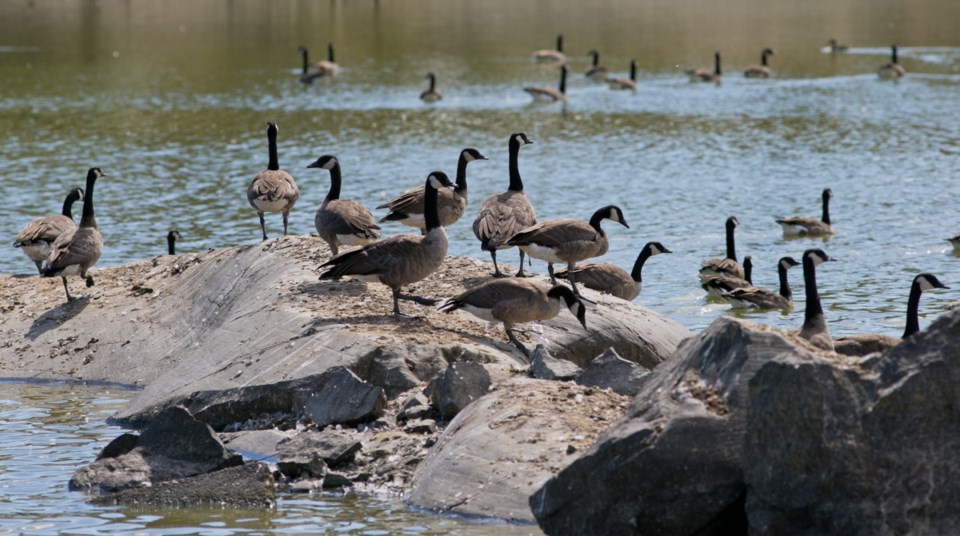It cost about $31,200 — about $725 each — to capture and kill 43 Canada geese in a cull undertaken by the Capital Regional District this year.
The CRD had a permit to cull up to 250 geese on private agricultural land on the Saanich Peninsula, but managed to bag just 43.
While CRD staff said the project met objectives to test culling methods, some CRD directors wondered about the cost.
Juan de Fuca Electoral Area director Mike Hicks called the high cost combined with the low number culled “absurd.”
“I personally don’t think we’re doing any damage to the goose populations,” Hicks said, noting that the results of the goose cull were not different from the combined CRD/Oak Bay deer cull that cost more than $270,000 but saw only 11 urban deer trapped and killed.
Hicks said the region should focus more on removing goose feces from playing fields and beaches, and if future culls are planned, they should be done on a large scale, he said.
“If we’re going to cull them we should cull them — thousands of them. Forty is just a waste of time,” he said.
Canada geese have been considered a problem since the 1980s as they damage crops and cause health concerns by defecating on playing fields, parks and shorelines. The goal of the pilot project cull was to test a method of population reduction, according to a CRD staff report.
“The overall consensus was that the goals of the project were met, the method of capture and dispatch was humane and met the requirements of federal and provincial guidelines and procedures.”
Kim St. Claire, the CRD manager of visitor services who oversaw the goose cull, told the CRD parks committee the low number of geese taken was because the moulting geese decided to hang out in the largest numbers near salt water, not on the private farm lands where they congregated in the past.
“Right up until a few days before the actual cull in June of this year, we were monitoring the fields of those landowners that had given us permission to do that. There were 40 to 45 in this one area, which seemed to be the largest population,” St. Claire said.
“It seemed this year for reasons that we don’t totally know why, the larger flocks were congregating along the salt-water areas.” The CRD did not have permission to cull in those areas.
The capture team included a contractor for the cull, a provincial veterinarian, two volunteers and a monitoring consultant.
The committee was earlier told the birds were to be killed by what’s called cervical adjustment, which means their necks were snapped.
Results of the goose and deer culls will be used in helping to determine whether the CRD should establish a wildlife division to deal with problems caused by animals, such as deer, geese, bullfrogs and rabbits.
CRD chairman Nils Jensen, who is also Oak Bay mayor, believes the division is a necessary step. “These problems aren’t going to go away on their own.”
View Royal Coun. John Rogers, an alternate CRD director, said a regional wildlife-management service is needed to protect food supply.
“People say, ‘Well, let the farmers just handle it themselves.’ But I think this is a food-security issue and the region needs to take a regional approach on addressing this problem.”
Two-thirds of the cost for the goose-cull project was for the contract for the actual cull, while the rest was spent during the last two years on moult surveys, permit documentation and planning.
About 87 per cent — $27,200 — came from the B.C. Agricultural Research and Development Corporation. The remainder was funded largely by the CRD and some municipalities.



